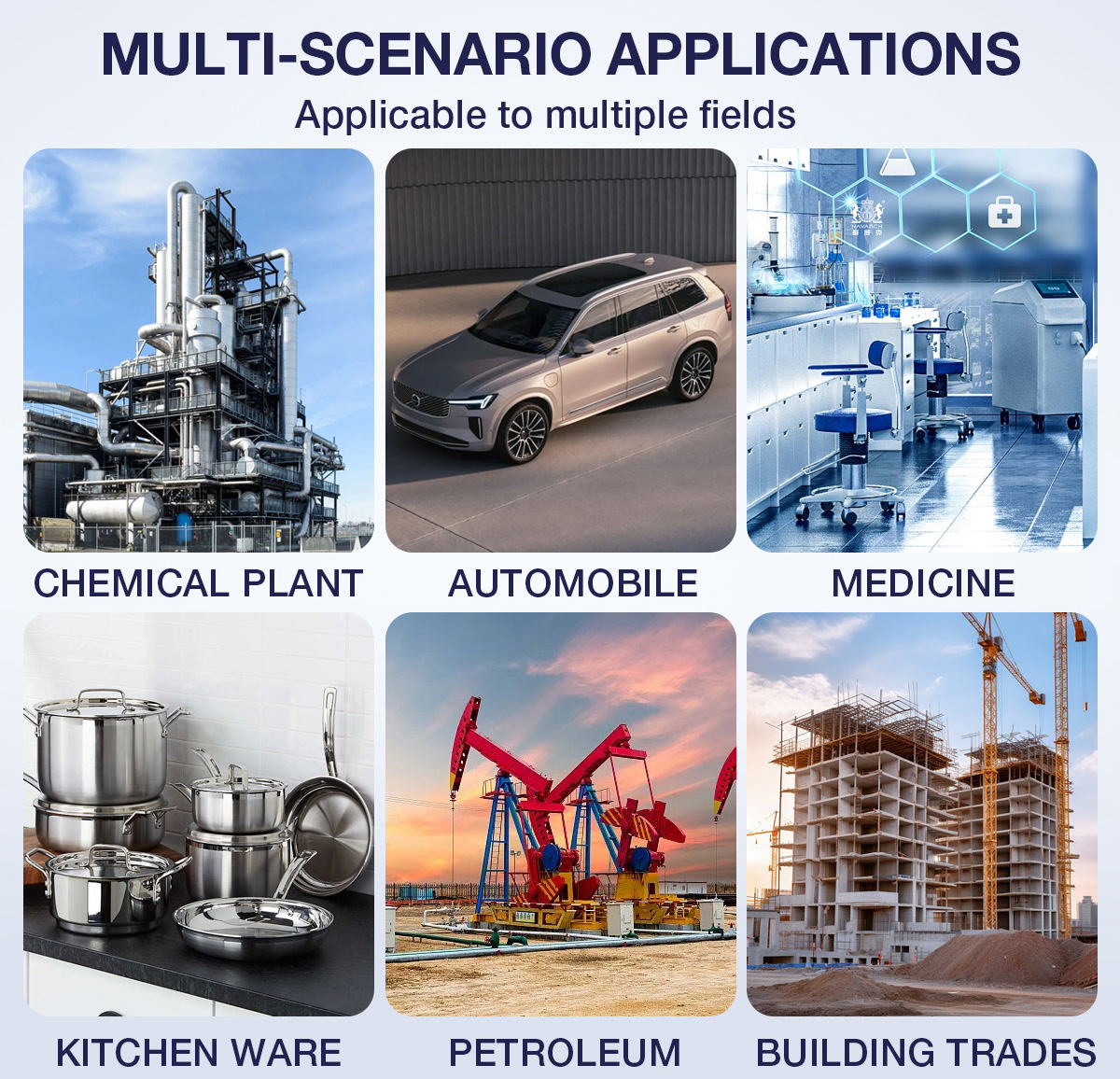The stainless steel plate features a smooth surface with excellent plasticity, toughness, and mechanical strength. It offers strong resistance to corrosion caused by acids, alkaline gases, solutions, and various other media. Although it is an alloy steel that is highly resistant to rust, it is not entirely immune to it. The term “stainless steel plate” generally refers to steel that can resist corrosion from mild environments such as air, steam, and water, while “acid-resistant steel plate” refers to steel capable of withstanding more aggressive chemical media like acids, alkalis, and salts.
Product Name: | Stainless steel plate |
Type: | Plate |
Thickness: | 0.3-200mm |
Length: | 2000mm, 2438mm, 3000mm, 5800mm, 6000mm,12000mm, etc |
Width: | 40mm-600mm, 1000mm, 1219mm, 1500mm, 1800mm, 2000mm, 2500mm, 3000mm, 3500mm, etc |
Standard: | ASTM, AISI, JIS, GB, DIN, EN |
Surface: | BA, 2B, NO.1, NO.4, 4K, HL, 8K |
Application: | It is widely used in high-temperature and electric industry, medical devices, construction, chemistry, food industry, agriculture, and ship components. |
| It also applies to food and beverage packaging, kitchen supplies, trains, aircraft, conveyor belts, vehicles, bolts, nuts, springs, and screen mesh etc |
Certification: | ISO, SGS, BV |
Technique: | Cold Rolled Hot Rolled |
Edge: | Mill Edge Slit Edge |
Quality: | SGS Inspection |
Grade (ASTM UNS): | 304, 304L, 321, 316, 316L, 317L, 347H, 309S, 310S, 904L,S32205, 2507, 254SMOS, 32760, S31703, S31603,316Ti, S31635,S31254, N08926, 2205, S32205, S31008, S30908, S32750, S32760, 630 etc |
Grade (EN): | 1.4301, 1.4307, 1.4541, 1.4401, 1.4404, 1.4571, 1.4438, 1.4539,1.4547, 1.4529, 1.4410, 1.4501, 1.4462, 1.4845, 1.4542, ,etc |

The term “stainless steel plate” generally refers to both stainless steel and acid-resistant steel plates. There are numerous types of stainless steel plates with varying properties, which have gradually developed into several categories over time.
Based on the microstructure, stainless steel plates are classified into four main types: austenitic stainless steel, martensitic stainless steel (including precipitation-hardening stainless steel), ferritic stainless steel, and duplex stainless steel combining austenitic and ferritic structures.
According to their primary chemical composition or characteristic alloying elements, they can be categorized as chromium stainless steel, chromium-nickel stainless steel, chromium-nickel-molybdenum stainless steel, low-carbon stainless steel, high-molybdenum stainless steel, and high-purity stainless steel, among others.
By performance and intended use, they are further divided into nitric acid–resistant, sulfuric acid–resistant, pitting corrosion–resistant, stress corrosion–resistant, and high-strength stainless steel plates.
Based on functional characteristics, stainless steel plates can also be classified as low-temperature resistant, non-magnetic, free-cutting, or superplastic grades.

Generally, stainless steel plates are grouped according to both structural and chemical composition features into martensitic, ferritic, austenitic, duplex, and precipitation-hardening types—or broadly divided into chromium stainless steels and nickel stainless steels.
Applications:
Stainless steel plates are widely used in pulp and paper equipment, heat exchangers, machinery, dyeing systems, film processing equipment, pipelines, and as exterior materials for buildings located in coastal areas.




































